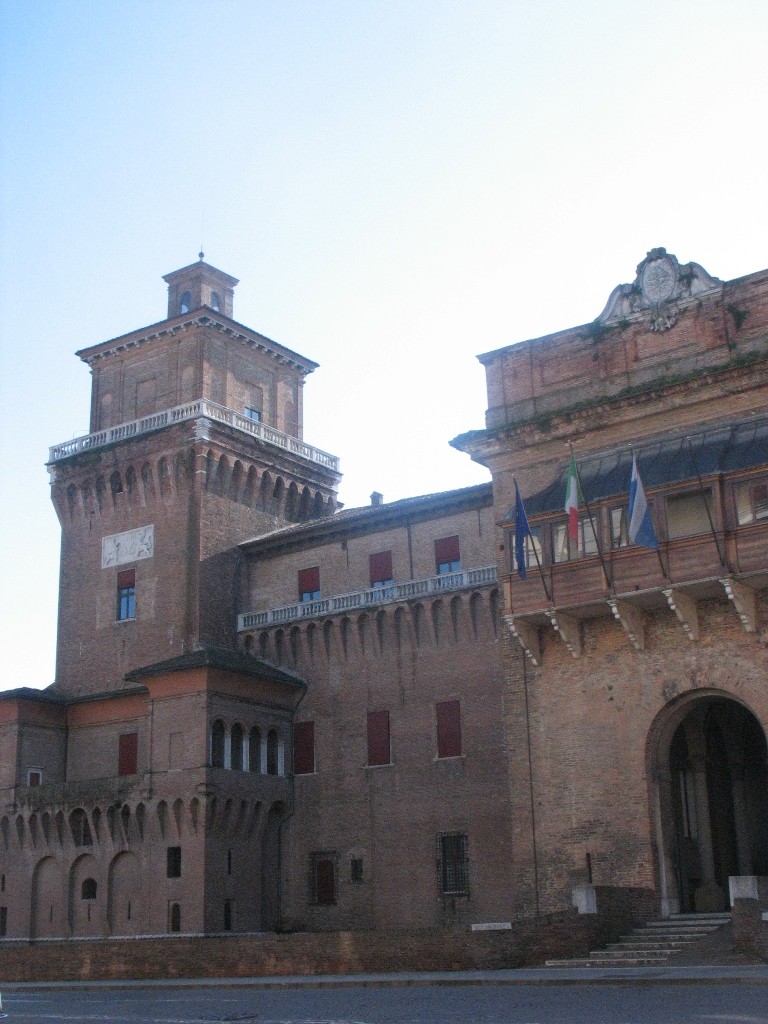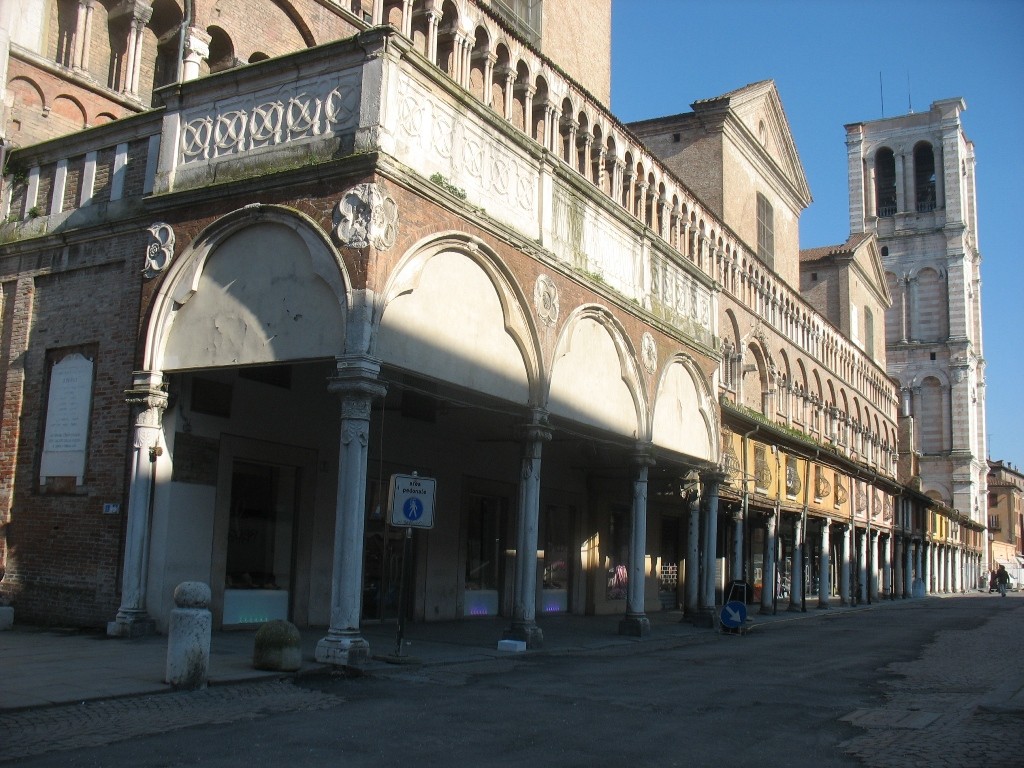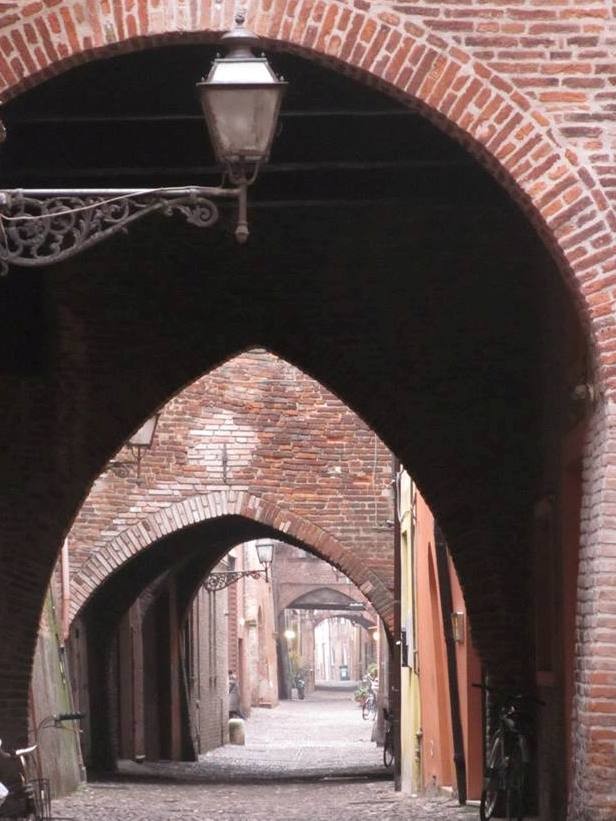A sketch of Ferrara
"Nemo propheta in Patria". As great Wystan Auden used to say, the Old Masters were never wrong. Of course, he was referring to the Flemish painters, while the source I am quoting from is of a rather different character (I think from the Gospel of Luke, though I am not totally sure about that). Anyway, I started this entry with this flurry of quotations in order to legitimate my decision of writing about my hometown, Ferrara. After having the chance of confronting with people (like some colleagues of mine) who have visited Ferrara as tourists, I am starting to appreciate fully the magic atmosphere that permeates the town. As a native, indeed, I had not realised that Ferrara is probably one of the most fascinating cities of Italy, neither during my youth trip to the centre with my friends, nor during the 5 years of university studies spent there. Though aware of the difficulty of the difficulty of the task I am undertaking, then, I will try and describe Ferrara with the eyes of a foreigner, rather than those of a native.

You may think that saying Ferrara is one of the finest cities in Northern Italy is probably a bit of an exaggeration. It may be so, but there are several factors which, in my opinion, make this judgment rather justified. Undeniably, the cultural and historic heritage of Ferrara is vast and of great value. Not by chance, it was awarded by the Unesco with the title of "City of Renaissance" in 1995. The two icons of the city, the Castle and the Cathedral, are just the most emblematic examples of a large set of landmarks which are really worth seeing. Another gem is Palazzo dei Diamanti, a palace which may be taken as the symbol of the urban expansion which characterised the city during the Renaissance. Although, a walk for two of the most charming district of the town, the Jewish ghetto and the ancient castrum, the oldest part of the city, is probably as fascinating as visiting the centre and the Renaissance district. Not to mention the medieval area, which was the core of the city during the first centuries of the Este supremacy.

Right... the Este family...it was under their government that Ferrara affirmed itself as one of the most attractive courts of Northern Italy during the 15th and 16th centuries. Apart from taking delight in some of their favourite pastimes, hunting in the countryside south of the Po river and benefiting from the fabulous local gastronomy, the Este also took interest in art and literature. It must not be forgotten, indeed, that Ludovico Ariosto, the most eminent literate of the Italian (if not European) Renaissance, spent most of his life in Ferrara. Besides, the dukes of Ferrara also patronized several artists, whose frescoes may be appreciated nowadays in the medieval palaces (such as Palazzo Schifanoia) where they have been carefully preserved. When the Este dukes had to give up their power, Ferrara become part of the Pope's properties. However, rather than affecting the charm of the town, the centuries which went by under pontifical control preserved it untouched (though with a rather marginal role in the political scenery).
From what has been written so far, Ferrara may seem a town with a glorious past, whose legacy is still well conserved but with few future perspectives. Like an aged lady, who indulging herself in the contemplation of her jewels and the commemoration of her past pleasures, wraps herself in a curtain of oblivion and contempt for the world outside. Although, this representation of Ferrara would be far from the truth. The town, indeed, is still alive and kicking, thanks to a series of events who decisively contribute to revitalise it. The Ferrara Buskers Festival, the International Festival of Journalism and the Ferrara Balloons Festival are only the main events of a vast program, not to mention the painting expositions of international organised in the delicious setting of Palazzo dei Diamanti.

Moreover, Ferrara also boasts a series of tasty complements to this pulpy main course. Talking of gastronomy, Forbes has recently stated that the cuisine of Emilia-Romagna, the region where the town is found, is the best in the world. Of course, the food in Ferrara does not make exception. The long-lasting tradition of the town, indeed, includes several dishes of unique value. Another element which contribute to the quality of life is the abundance of green areas. Some of them are even part of the urban fabric, like Piazza Ariostea and Parco Massari, while some others, like the Parco Urbano, are located right outside of the ancient city walls. Right... a sketch of Ferrara, though brief and rapidly outlined, would not have been complete without including the walls, which once defended the town from the enemies and now offer a superb space where the Ferraresi may go and have a relaxing walk.
Finally, in the description of the pleasures of the Este dukes, together with the food, I had mentioned the taste for hunting in the countryside. If times have changed and hunting has almost disappeared, not quite so the countryside. The town is indeed surrounded by rural areas, extending eastward towards the sea and northward towards the Po river (which has played a decisive part in its history). This natural environment, though, does stand for mere farmlands: in this pattern of fields, woods and water courses, indeed, a series of hidden gems can be found by those who may be interested in looking for them. The portrait of Ferrara, then, would be that of a country lady of noble lineage, whose ancestors have left a considerable legacy, which she still enjoys at the present time. Though her soul and her essence are rooted in the rural tradition, she does not mind putting on the glitz every now and then, coming alive in the special occasions. A lady whose charm has survived the passing of time.
Photo gallery
Content available in other languages
- Italiano: Uno schizzo di Ferrara
- Português: Um esboço de Ferrara
Want to have your own Erasmus blog?
If you are experiencing living abroad, you're an avid traveller or want to promote the city where you live... create your own blog and share your adventures!
I want to create my Erasmus blog! →


















Comments (0 comments)